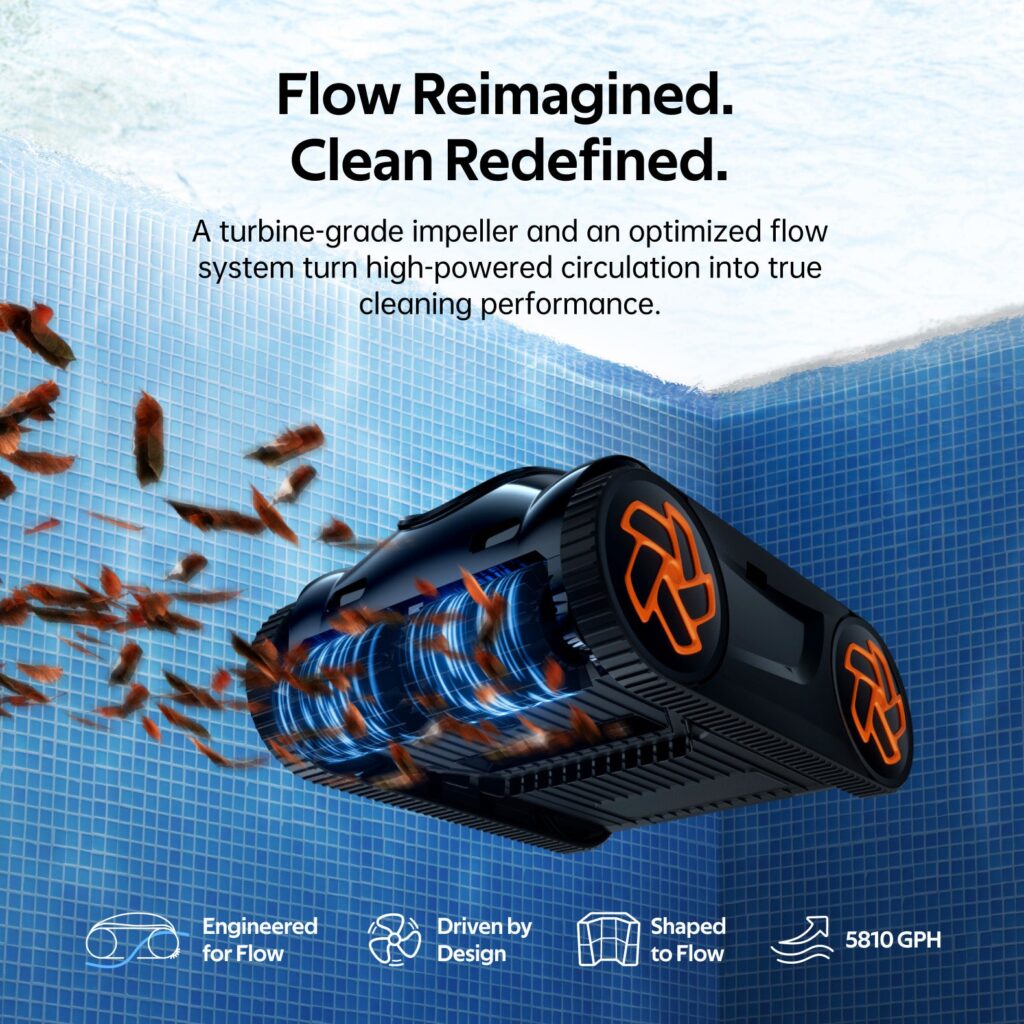Picture this: You’re spending another frustrating weekend skimming debris from your pool, watching your old cleaner miss the same spots repeatedly while your energy bills keep climbing. As pool technology rapidly evolves, many homeowners find themselves stuck with outdated cleaning systems that waste time, money, and energy. The question isn’t just whether your pool cleaner works – it’s whether it’s equipped to meet tomorrow’s demands. Modern pool maintenance has moved far beyond simple suction and filtering, embracing smart technology that transforms how we care for our aquatic sanctuaries. From AI-powered navigation to predictive maintenance alerts, today’s automatic pool cleaner vacuum offer solutions that seemed like science fiction just years ago. As we dive into the world of intelligent pool ecosystems, discover how next-generation cleaning systems are redefining what’s possible for pool maintenance while preparing your investment for the future.
The Smart Pool Revolution: Beyond Basic Cleaning
Today’s pool cleaning technology represents a quantum leap from traditional manual vacuums and basic automated systems. Modern smart cleaners leverage sophisticated technologies that transform pool maintenance from a chore into an automated, efficient process. While conventional cleaners simply move along predetermined paths, intelligent systems like the iGarden smart pool cleaner employ advanced sensors and processing power to analyze pool conditions in real-time.

These smart cleaners connect seamlessly to home WiFi networks, enabling remote monitoring and control through dedicated mobile apps. Owners can now schedule cleaning cycles, receive maintenance alerts, and even track cleaning performance metrics from anywhere.
The integration of Internet of Things (IoT) capabilities means these devices can communicate with other smart home systems, optimizing operation based on factors like weather forecasts, pool usage patterns, and energy costs. Advanced AI algorithms enable these cleaners to learn your pool’s specific layout and trouble spots, continuously improving their cleaning efficiency over time. This intelligence translates directly into energy savings, with smart cleaners using up to 40% less power than traditional models through optimized routing and variable-speed operation. For tech-savvy owners, features like smartphone notifications about filter status, water quality measurements, and predictive maintenance needs provide unprecedented control over pool care. This revolution in pool cleaning technology isn’t just about convenience – it’s about creating a more sustainable, cost-effective approach to pool maintenance that’s ready for whatever the future brings.
Essential Smart Features for Future-Proof Performance
Adaptive Mapping & Navigation Systems
Modern pool cleaners employ sophisticated navigation technologies that revolutionize cleaning efficiency. Advanced LIDAR systems create precise 3D maps of pool surfaces, enabling complete coverage while avoiding obstacles. These systems outperform traditional gyroscopic navigation by adapting to changing pool conditions and maintaining accuracy even in varying light conditions. The result is consistently thorough cleaning without missed spots or redundant passes.
Automated Maintenance Scheduling
Smart scheduling capabilities transform pool maintenance from reactive to proactive. Intuitive mobile apps allow owners to set customized cleaning schedules based on pool usage patterns, local weather conditions, and special events. Built-in analytics track cleaning history and pool conditions, automatically adjusting schedules for optimal efficiency. The system learns from usage data to recommend ideal cleaning frequencies and durations, ensuring your pool stays pristine while minimizing energy consumption.
Self-Correction Capabilities
Advanced self-correction features eliminate common cleaning interruptions. When encountering obstacles, smart cleaners automatically analyze the situation and execute appropriate maneuvers to continue cleaning. Real-world testing shows these systems can navigate around toys, pool covers, and even swimmers without human intervention. If issues arise, the cleaner sends immediate smartphone notifications with specific troubleshooting steps, often resolving problems before they impact cleaning performance. This intelligent error handling significantly reduces maintenance downtime and extends equipment life through preventive care.
Choosing Your Automated Cleaning System
Compatibility Assessment
Different pool surfaces demand specific cleaning technologies for optimal results. Vinyl-lined pools require gentler brush materials and controlled suction power to prevent liner damage. Concrete pools benefit from stronger scrubbing action and enhanced debris collection capabilities, while tile surfaces need specialized rubber rollers to protect grout lines. When evaluating cleaners, verify the brush types and pressure settings align with your pool’s construction materials.
Connectivity Ecosystems
Today’s smart pool cleaners integrate seamlessly with home automation platforms. Look for models offering native compatibility with popular voice assistants like Alexa and Google Home for convenient voice control. Advanced systems support IFTTT protocols, enabling automated responses to weather changes or scheduling around pool parties. Consider whether the cleaner’s app ecosystem provides API access for future smart home innovations.
Energy Consumption Ratings
Smart pool cleaners vary significantly in their energy efficiency profiles. Leading models feature variable-speed motors that adjust power consumption based on cleaning needs, potentially reducing energy use by up to 60% compared to single-speed units. When comparing options, examine the watts-per-hour ratings during both standard and boost cleaning modes. Factor in your local electricity rates and typical cleaning frequency to calculate long-term operating costs. Modern robotic cleaners generally outperform suction-side alternatives in energy efficiency, often recovering their higher initial cost within two to three seasons through reduced power consumption.
Maximizing Longevity & Protecting Your Investment
Decoding Warranty Policies
Understanding your smart pool cleaner’s warranty coverage is crucial for long-term protection. Pay special attention to electronic component coverage, including circuit boards, sensors, and connectivity modules. Most manufacturers offer tiered warranty structures, with mechanical parts typically covered longer than electronic elements. Verify whether firmware updates are required to maintain warranty validity, and document all maintenance activities to prevent coverage disputes.
Proactive Maintenance Routines
Monthly sensor maintenance ensures optimal performance and extends equipment life. Clean optical sensors with microfiber cloths to maintain navigation accuracy. Inspect and clean brush rollers, removing trapped debris and checking for wear patterns. Test WiFi connectivity strength and verify app communication monthly. Examine filter canisters for damage and clean pressure sensors to prevent false readings that could trigger unnecessary maintenance cycles.
Firmware Update Protocols
Regular firmware updates are essential for maintaining smart functionality and security. Enable automatic update notifications through your cleaner’s mobile app, and always install updates within manufacturer-recommended timeframes. Before major updates, back up your cleaner’s custom settings and cleaning maps. If selling your home, document the update history and transfer digital ownership credentials to maintain the unit’s resale value and ensure continued warranty coverage for the next owner.
Smart Pool Technology: The Future of Maintenance
Relying on outdated pool cleaning technology isn’t just an inconvenience – it’s a liability that costs you time, money, and peace of mind. Today’s smart cleaners represent more than just an upgrade; they’re an essential investment in your pool’s future. With features like AI-powered navigation, automated scheduling, and predictive maintenance alerts, modern systems deliver superior cleaning efficiency while reducing energy consumption and maintenance headaches. The integration of IoT capabilities and smart home connectivity ensures these devices remain relevant and adaptable as technology continues to evolve. When evaluating your current pool cleaner, consider whether it offers the sophisticated mapping systems, self-correction capabilities, and energy efficiency standards that define today’s cutting-edge solutions. Remember that protecting your investment through proper maintenance and warranty coverage is crucial for long-term satisfaction. As intelligent pool cleaning systems become the new standard, the question isn’t whether to upgrade – it’s whether you can afford not to. Take the time to assess your current cleaner against these future-ready benchmarks and consider how a smart upgrade could transform your pool maintenance experience while preparing your home for tomorrow’s technological demands.
Information contained on this page is provided by an independent third-party content provider. Binary News Network and this Site make no warranties or representations in connection therewith. If you are affiliated with this page and would like it removed please contact [email protected]



Comments